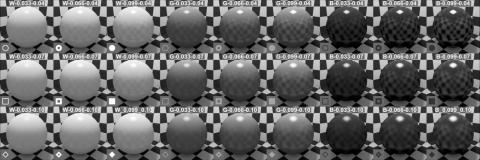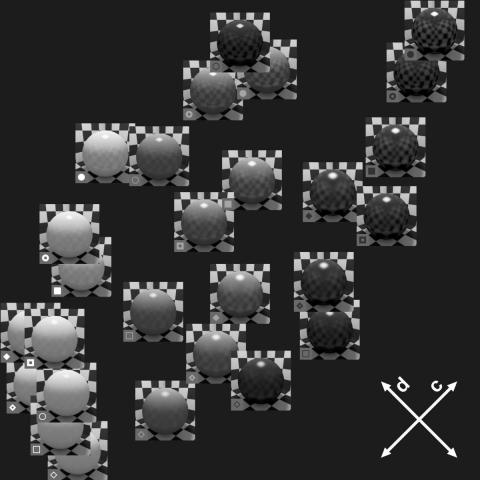February 29th, 2012 at 1:00pm, Yale Center for British Art, Lecture Hall
Digital Coffee, in conjunction with the Department of Computer Science, hosted a presentation by James Ferwerda on tangible display systems. Tangible display systems allow realistic simulation and direct interaction with virtual surfaces.
Abstract
We are developing tangible display systems that enable natural interaction with virtual surfaces. Tangible displays are based on modern mobile devices that incorporate electronic image displays, graphics hardware, tracking systems, and digital cameras. Custom software allows the orientation of a device and the position of the observer to be tracked in real-time. Using this information, realistic images of surfaces with complex textures and material properties illuminated by environment-mapped lighting, can be rendered to the screen at interactive rates. Tilting or moving in front of the device produces realistic changes in surface lighting and material appearance. In this way, tangible displays allow virtual surfaces to be observed and manipulated as naturally as real ones, with the added benefit that surface geometry and material properties can be modified in real-time. We will demonstrate the utility of tangible display systems in four application areas: material appearance research; computer-aided appearance design; enhanced access to digital library and museum collections; and new tools for digital artists.
Bio
James A. Ferwerda is an Associate Professor and Xerox Chair in the Munsell Color Science Laboratory in the Chester F. Carlson Center for Imaging Science at the Rochester Institute of Technology. He received a B.A. in Psychology, M.S. in Computer Graphics, and a Ph.D. in Experimental Psychology, all from Cornell University. The focus of his research is on building computational models of human vision from psychophysical experiments, and developing advanced imaging systems based on these models. He is an Associate Editor of ACM Transactions on Applied Perception, Guest Editor of IEEE Computer Graphics and Applications, and serves on CIE Technical Committee TC8-08 on High Dynamic Range Imaging. In 2003 he was selected for the National Academy of Engineering Frontiers of Engineering Program and in 2010 for the National Academies Keck Futures Initiative.

